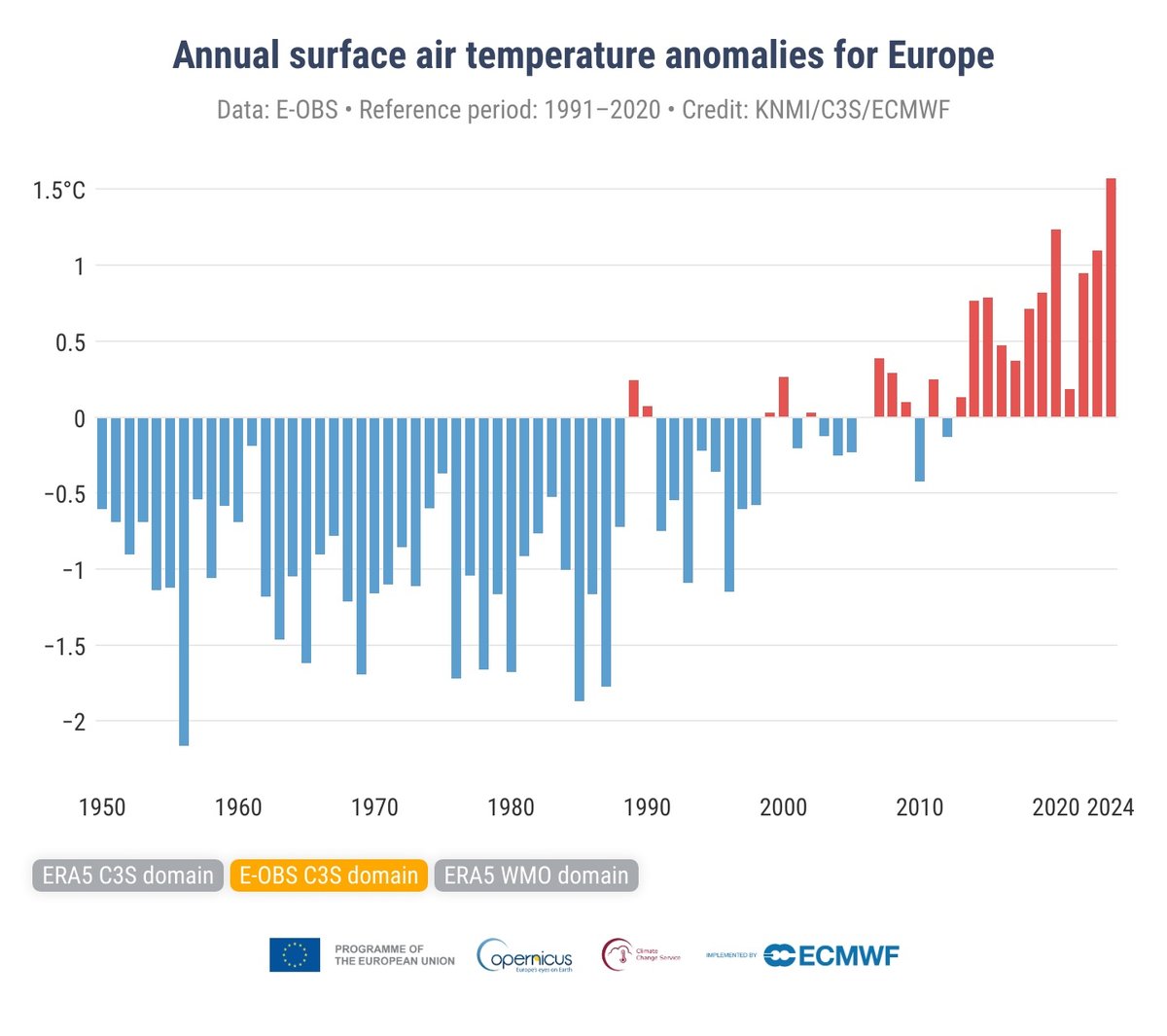
Graph: Copernicus Climate Change Service
“Things aren’t just getting worse. They’re getting worse faster,” according to climate change expert Zeke Hausfather. Now that the world needs to speed up its actions to slowdown global warming, we are moving in the opposite direction.
The state of the climate in 2024
In the annual update of the state of the climate, tens of climate change experts from around the globe report the current situation of global warming. In 2024, the Earth’s surface temperature had risen by 1.52 °C, exceeding the 1.5 °C threshold of the Paris Climate Agreement. For the first time since pre-industrial times. However, the year 2024 was a special one with the El Niño phenomenon causing extra global warming. The human-caused global warming was ‘only’ 1.36 °C. Still, it will only take a few years before this threshold value is actually exceeded.
In climate science, one usually does not look at year-to-year changes but at changes over longer time periods. In the last decade, from 2015 to 2024, observed warming relative to pre-industrial times was 1.24 °C, of which 1.22 °C was human induced. Man-made global warming has been increasing since the start of measurements, reaching 0.27 °C per decade over 2015–2024. The land area is warming faster than the oceans. In 2015–2024, global land temperatures have increased by 1.79 °C and ocean temperatures by 1.02 °C.
Evidence too strong to ignore
In the last half a century, the rate of man-made global warming has increased from 0.19 °C in the 1970s to 0.27 °C over the past decade, roughly a 40% increase.
Zeke Hausfather states that ‘surface temperatures are an imperfect proxy for the actual warming of the Earth system’. Surface temperatures only represent a small part of the total amount of heat trapped by greenhouse gases – most of the extra heat is absorbed by the oceans. Besides, there is a year-to-year natural variability from El Nino / La Nina cycles and other events. There is, however, enough additional evidence to conclude that the acceleration of global warming is a fact. The acceleration is also apparent in ocean heat content, can be explained from a decline in the emission of aerosols that used to cool the climate, and agrees with climate model projections, to name a few. The sum of evidence presented by Hausfather leads him to conclude that the evidence of an acceleration of global warming ‘is becoming too strong to ignore’.
Sources:
- Zeke Hausfather, The great acceleration debate. The Climate Brink, 30 June 2025.
- Forster, P.M. et al., 2025. Earth System Science Data 17: 2641–2680.








